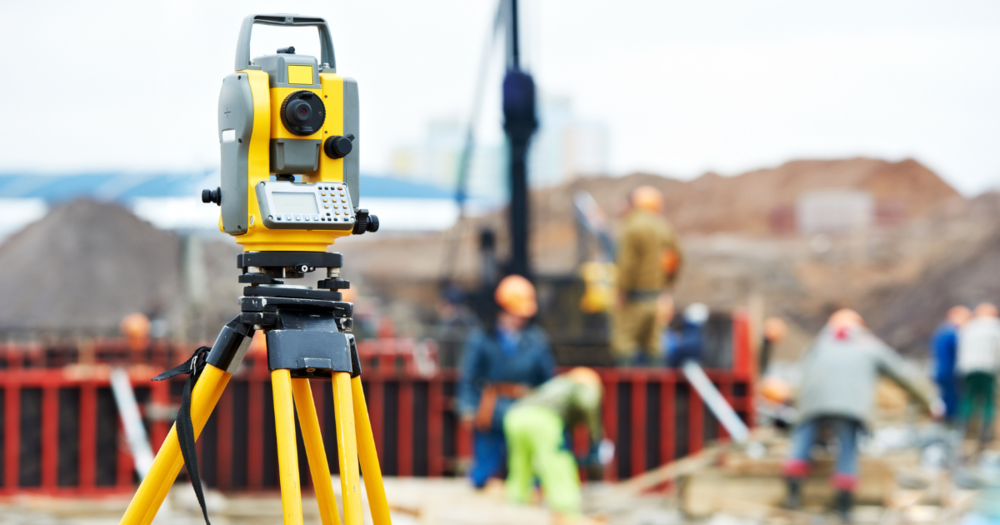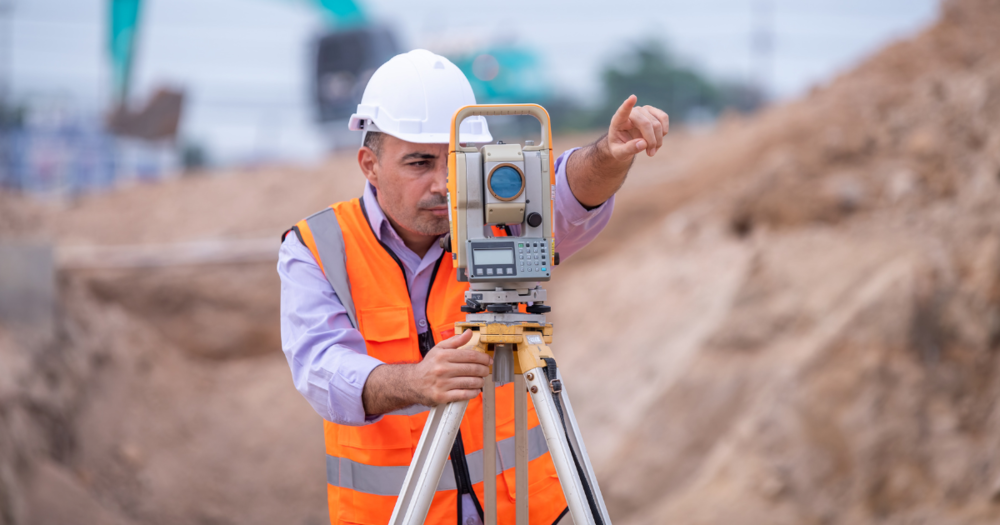
The right tools make or break your day when you're out in the field. As a surveyor, your total station is your most important tool.
What Is a Total Station?
A
total station is a tool surveyors use to precisely measure angles, distances, and coordinates.
It’s like a high-tech mash-up of a
theodolite and a distance meter, all rolled into one device. You use it to map out land, set elevation points, or guide construction layouts – pretty much anything that needs accurate measurements in the field.
There are two main types: traditional and robotic.
Both types do the same basic job, but how they do it – and how much help you need to run them – is where things start to differ.
Traditional Total Stations: Features and Use Cases
Traditional total stations are straightforward, reliable tools for measuring angles and distances manually.
They require a two-person team to operate. One person looks through the instrument and makes the measurements, while the other stands at the target point with
a prism. It’s a hands-on process that requires teamwork.
Traditional total stations are a solid pick for everyday tasks like setting
stakes, checking grades, or handling small-scale topographic surveys. While they don’t offer the automation of robotic models, they’re still highly accurate when used correctly.
Pros of Traditional Total Stations
- Lower upfront cost: Traditional total stations are more affordable, making them a good entry point for new surveyors or smaller firms.
- Simpler tech: With fewer features to manage, they’re easier to learn and maintain.
- Ideal for small teams or basic layouts: A traditional total station may be all you need if you have a two-person crew and are working on straightforward projects.
Cons of Traditional Total Stations
- Requires two people to operate: One person handles the station, and the other manages the prism. If you're short on staff, that can reduce efficiency.
- Slower data collection: You’ll spend more time walking back and forth and lining things up, especially on larger sites.
- Prone to human error: Mistakes can creep in with manual input.
Stonex Traditional Total Stations to Consider
If you’re looking for solid traditional options,
Baseline Equipment offers several Stonex models that balance accuracy with value.
- Stonex R20/R20LR – Great for routine site work with Bluetooth connectivity, reflectorless measurement, and reliable performance.
- Stonex R25LR – Good for general use with 2" accuracy and a 1000m reflectorless range.
- Stonex R35/R35LR – A step up in precision and distance, ideal for more detailed site work.
- Stonex R60 – This one has Android onboard, so you get some added digital tools while keeping manual control.
These models offer dependable performance without the price tag of robotic systems, making them a smart choice for basic to intermediate surveying tasks.

Robotic Total Stations: Features and Use Cases
Robotic total stations perform the same core functions as traditional models (measuring angles, distances, and coordinates) but add automation to speed things up and reduce the need for extra hands.
Instead of needing two people, robotic total stations use motorized tracking to follow
the prism automatically. That means one person can run the entire job from the field controller.
They’re especially useful on busy or complex sites where accuracy, speed, and mobility all matter.
Pros of Robotic Total Stations
- One-person operation: You don’t need a second crew member to hold the prism. One person manages everything, which saves time and labor costs.
- Increased accuracy with motorized tracking: The instrument follows the prism, reducing setup errors and helping maintain precision across long distances.
- Fast and efficient data capture: Because the system tracks and records automatically, you get more done in less time – especially on large or detailed layouts.
- Bluetooth and Android integration: Many robotic models include wireless connectivity and onboard software for easy control, data management, and syncing with field tools.
Cons of Robotic Total Stations
- Higher upfront investment: Robotic systems cost more than traditional ones, but the time and labor savings often balance that out over time.
- May require more training for new users: With more advanced features, it can take time for new users to learn how to use everything effectively.
Stonex Robotic Total Station to Consider
If you’re looking for a robotic option,
the Stonex R180 Robotic Total Station stands out. It’s built for real-world efficiency and complex site demands.
- Android onboard for intuitive operation – Navigate tasks like a smartphone. The interface is simple, flexible, and easy to learn.
- Ideal for construction layout and complex job sites – Whether managing a multi-phase build or handling detailed infrastructure work, the R180 delivers fast results with top-tier accuracy.
It’s a smart choice for surveyors who want to accomplish more with fewer people without sacrificing precision or reliability.
Which One is Right for You?
Choosing between a traditional and robotic total station comes down to how you work and what you need from your gear. Here are a few questions to help guide your decision:
- What’s your budget? A traditional model would be the way to go if you want to keep costs down.
- Do you work solo or with a team? Robotic stations are great if you often work alone or want to free up crew members for other tasks.
- What’s the complexity of your typical job site? The more detailed or fast-paced the site, the more you’ll benefit from the speed and precision of a robotic model.
Find the Right Fit with Baseline Equipment
Whether you’re just starting out or ready to upgrade,
Baseline Equipment Company has the tools and support to keep your work moving forward.
From simple setups to advanced systems,
you’ll find total stations built for the real-world demands of surveying.
Discover key differences, pros, cons, and use cases to choose either the robotic or traditional total station for your workflow and budget.